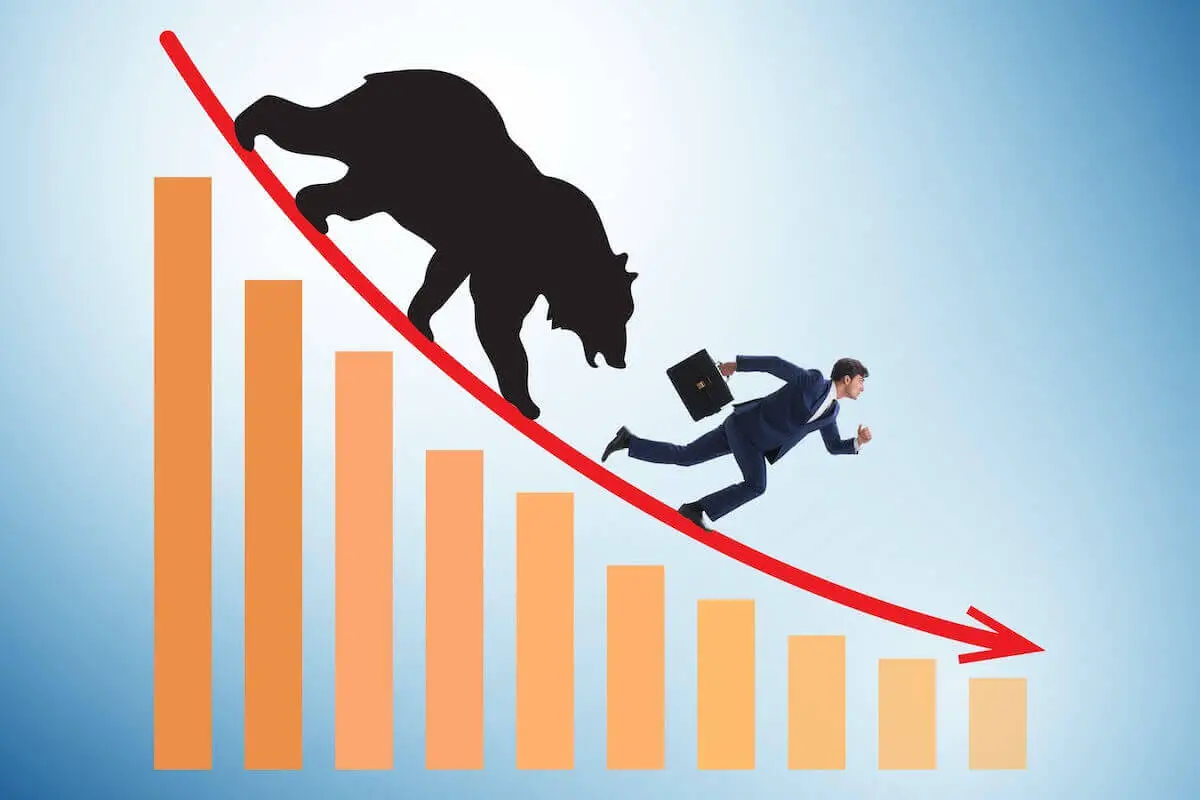Every investor should have their “Rules on Investing” in place for times of “market volatility and turmoil.” During times like this, I am often reminded of the old adage:
The first rule of investing?
Don’t lose money.
And the second rule?
Don’t forget the first.
Those words, famously attributed to Warren Buffett, are echoing a little louder right now as the markets react to inflation data, interest rate decisions, and global uncertainty.
If you’ve checked your TSP balance recently and felt your stomach flip, and you might be reaching for the Dramamine, you’re not alone. But before making any sudden moves, let’s take a step back and talk about what’s happening—and what it should mean for your retirement strategy.
So… Should You Sell in a Down Market?
It’s tempting, especially when the media shouts every 0.03% drop like the sky is falling. But here’s the truth: selling in a down market locks in your losses.
No one wants to see their investments drop – especially for federal employees that might be considering retiring under one of the many options benign offered right now to certain agencies (Deferred Resignation, VERA, VSIP…).
Market fluctuations are normal. Headlines, on the other hand? They’re designed to get clicks—not to guide your retirement planning.
Oh, and let me let you in on a little under-discussed topic about markets and retirement planning – according to the Motley Fool, the average American retiring from 2020 to now will be 18.6 years for men and 21.3 years for women.
Historically, bear markets (defined as a 20% drop or more in major indices like the S&P 500) occur about once every 6 years. Corrections (a drop of 10% or more) happen even more frequently—about once every 1 to 2 years.
So, if someone is retired for, say, 25 years (let’s think longevity here!), it’s reasonable to expect:
- 4–5 corrections
- 3–4 bear markets
The key takeaway? Market downturns aren’t a surprise—they’re part of the process, which makes your plan for how you respond more important than trying to predict or avoid them.
Regardless of when you choose to retire, the odds that you will experience a bear market or correction while you are retired are pretty gosh darn high.
Money Is Emotional, but Should You Be?
Think of it this way: if your TSP account were a house and its value dropped for a few months, would you rush to sell it? Probably not. You’d wait it out, knowing that long-term value doesn’t come from panicking— it isn’t about timing the markets; it is about time IN the markets.
The same applies here. Long-term investing is a strategy, not a reaction, and for federal employees like you, your retirement plan should be designed to weather storms.
When we work with federal employees, one of the conversations we habitually have is that, in our opinion, the money you need to spend (actually take out from your investments and use it to purchase goods and services) for the next five years doesn’t belong in the stock market.
Now, that doesn’t mean all your investments are in cash necessarily. It does mean that you have a solid set of rules to follow so that when times, well, like NOW arise, you’re not logging in and getting “trigger-happy” and executing trades you could regret later.
Why 5 Years? This isn’t a blanket rule for everyone, but it is something that we give a lot of thought to when it comes to investing, and here is why:
In the history of U.S. stock markets, there has never been a period where the market declined for five consecutive years. The longest stretches of consecutive annual declines are:
- 1929–1932: The market declined for four straight years during the Great Depression.
- 1939–1941: A three-year consecutive decline occurred during the onset of World War II.
- 1973–1974: The market experienced back-to-back annual declines during the 1970s bear market.
These instances illustrate that while multi-year downturns have occurred, a five-year consecutive decline has not been recorded in U.S. stock market history.
Feel like those dates are too far back in history to feel emotionally connected to? I get it. Let’s look at a more recent period:
Dot-Com Bust (2000–2002)
The market did decline three years in a row, but not five:
- 2000: -9.1%
- 2001: -11.9%
- 2002: -22.1%
This is one of the very few times in history where the market was down for three consecutive years.
Global Financial Crisis (2008)
2008 was a big single-year drop, but it was surrounded by positive years:
- 2006: +13.6%
- 2007: +3.5%
- 2008: -38.5%
- 2009: +23.5%
- 2010: +12.8%
Only 2008 was negative in those five years – brutal, of course – we were there, too – but we didn’t continue to spiral in that direction.
It’s Not About Timing the Markets, It’s About Time IN the Markets
Do you have a good financial plan in place so that you know what actions to take (or not take!) when market downturns happen? It’s not IF they happen, but WHEN they happen.
I know it’s really hard to keep a long-term perspective right now. It’s an emotionally charged time fueled by the access to immediate information, but if you can, talk with someone about your financial plan. Make dispassionate decisions and work with an advisor who understands your benefits.





